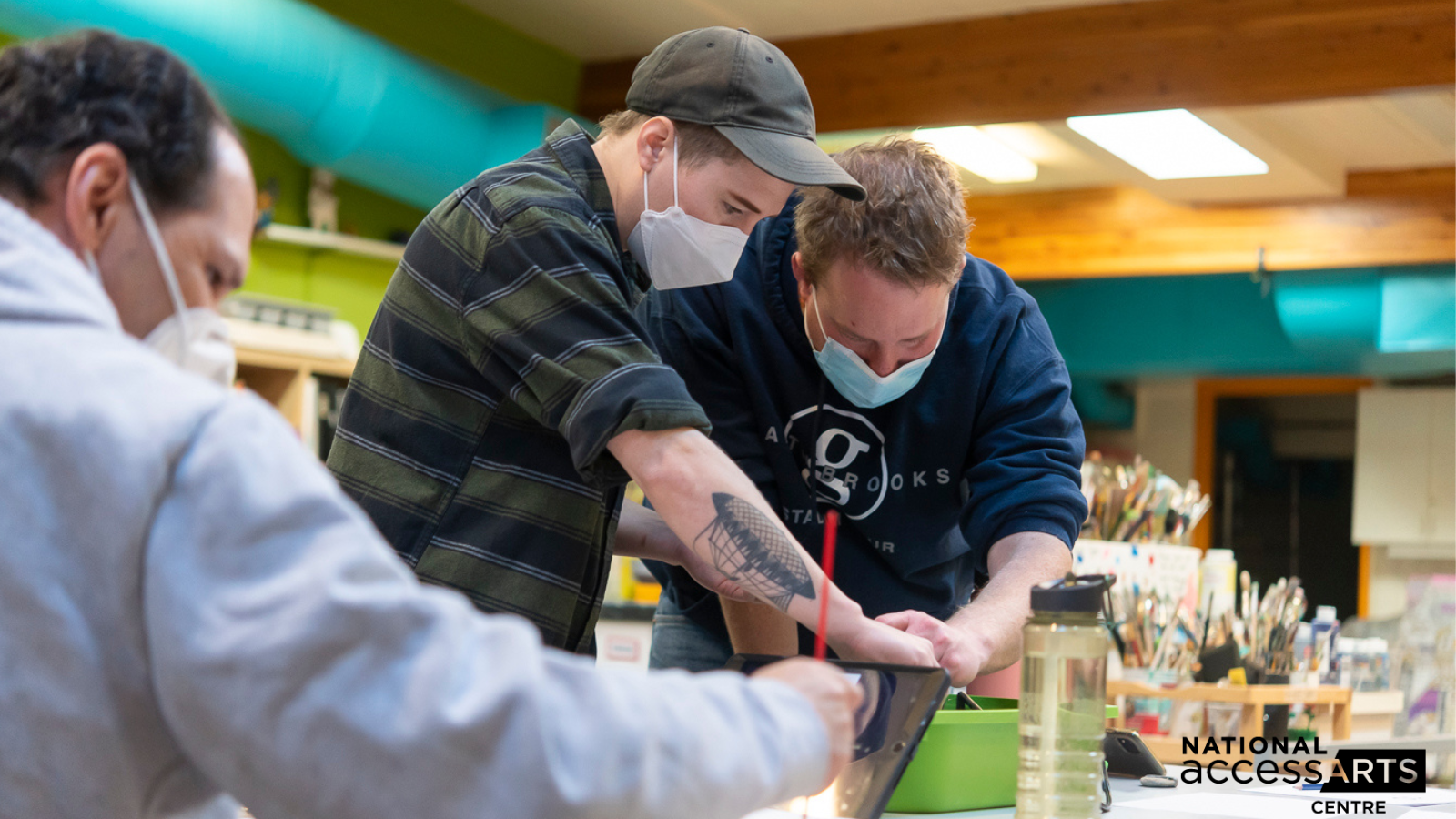Social choreographer Daniel Vais on Calgary as the national capital of the disability arts movement in Canada
Daniel Vais is the Executive Artistic Director of Culture Device. The progressive art organization’s projects include Drag Syndrome, an inclusive performance troupe for queens and kings with Down Syndrome.
As a social choreographer and improvisation specialist, Daniel produces social and cultural moments that move beyond aesthetics to bring people together in meaningful ways. “It’s not about the idea,” he says. “Social choreography is about the impact.”
Daniel’s work has taken him to cities across the U.K., and most recently to Calgary for BEGINNING, a national conversation on disability arts hosted by the National accessArts Centre (NaAC).
In addition to giving the closing address at BEGINNING, Daniel hosted a series of improvisation classes with NaAC artists. In a moment of inspiration, he also organized a salon on contemporary queer disabled art at a coffee shop outside his hotel.
Called The Saloon 0.0, the event gave those in the room a chance to meet leading queer disabled artists in a casual, intimate, and mind-blowing setting. “Everybody there understood they were experiencing something really special,” says Daniel.
That’s what Daniel does—he creates connections, just like choreography.
We talked to Daniel about what it takes to turn social and cultural moments into movements, and why Calgary is uniquely positioned to be the national capital of the disability arts movement in Canada. It’s about seeing opportunities and potential, he tells us, finding the right people, in the right place, at the right time. And the potential here is enormous, he says.
The Right People
In the short time that Drag Syndrome has been creating and performing together, Daniel has seen the troupe grow from a few performers to an internationally-acclaimed collective of “highly addictive queens and kings.” He attributes this rapid progression to the group’s talent as well as take-no-sh*t attitude.
“We never negotiate with the outside world,” says Daniel. “Our job is to be amazing artists and performers and models, and not to justify whether we are good enough or loud enough. We are fierce and we are fabulous, and we are getting a lot of attention because of the quality of the art that we are making.”
He sees the same unapologetic nature in the artists and arts administrators at the NaAC. “They know where they want to go and they know what they need to do, which is brilliant,” he says. The only thing holding them back is their location. “This place is full of creative people, but there’s no sense of community,” he adds. The city is just too sparse.
The Right Place
There are pockets of creative people that exist in Calgary—small cliques—says Daniel, but they’re hard to find. “Calgary is not a city that invites you to stay out on the street and hang around in groups,” he says. “It’s a design fault. The architecture here doesn’t reflect the people.”
That’s one of the reasons why the NaAC set out to build a $12-million multidisciplinary disability arts venue in northwest Calgary. The purpose-built, accessible arts hub will give artists with disabilities the right spaces and stages to properly showcase their talent, and ultimately, inspire others to follow.
The new NaAC venue will feature a performing arts venue, art gallery, and outdoor gathering spaces designed to not only support artists with disabilities, but welcome their able-bodied peers to witness the incredible work created inside. For Daniel, the latter part is key.
“To read and hear about it is fabulous, fantastic, but until you engage and see for yourself, you won’t understand,” he says. “So, I really encourage people to have a look and get engaged—you might surprise yourself!”
As for the venue itself, Daniel says, “It’s very ambitious, but people need to aim for ambition. You have enormous museums here. These artists deserve a place. They deserve a museum. They deserve a centre as glamorous as others. So, when you build a cultural centre like that, you go for gold!”
The Right Time
As the disability art movement gains momentum across Canada and around the world, artists like those at the NaAC are challenging society’s traditional understanding of art. That’s because they no longer have to compare theirs to mainstream art, says Daniel. In fact, they can’t.
“It’s a completely new form of art,” says Daniel. “It’s got a space of its own. We have our own references now because we have history. We can do something different from the mainstream. And in a way, we kind of like disturbing the mainstream.”
While the NaAC is relatively new to the scene (shifting from a disability service organization or “day program” to a bona fide arts organization with the introduction of its strategic plan in 2018), it’s certainly on the right side of history.
Building History
In the few years since its 2018 strategic plan was released, the NaAC has cemented its place as a leader in the disability arts sector. The organization has developed several international relationships and secured thousands in commission fees for its artists.
In late May 2022, the NaAC announced a new partnership with the family and estate of the late Canadian artist Won Lee. With their gift of Won Lee’s former studio and gallery space—estimated at $2.5 million—the family and estate have helped the NaAC become truly national by supporting Canadian artists in both Calgary and Toronto. And that’s just the beginning.
“If you are good enough, people will come from around the world to work with you,” says Daniel, which is what we’re starting to see now at the NaAC. “They’ve taken the torch, and they’re giving it room to grow. If it continues to use all of its potential, the NaAC can be a national pride!”




